Dogs have been by humanity’s side since before the earliest models of civilization, but it can be hard to underestimate the important roles they played in our growth as a species. Dogs were first domesticated between 15,000 and 30,000 years ago, and they’ve since come to fulfill any number of specialized roles for us. Dogs have shared space with us on the battlefield, in the crop fields, and as trained companions. And in many cases, these jobs require highly specialized training and involve the stakes of life and death. There’s no universally recognized definition for the different types of working dogs, but here are some of the most popularly recognized categories.
1. Military Dogs
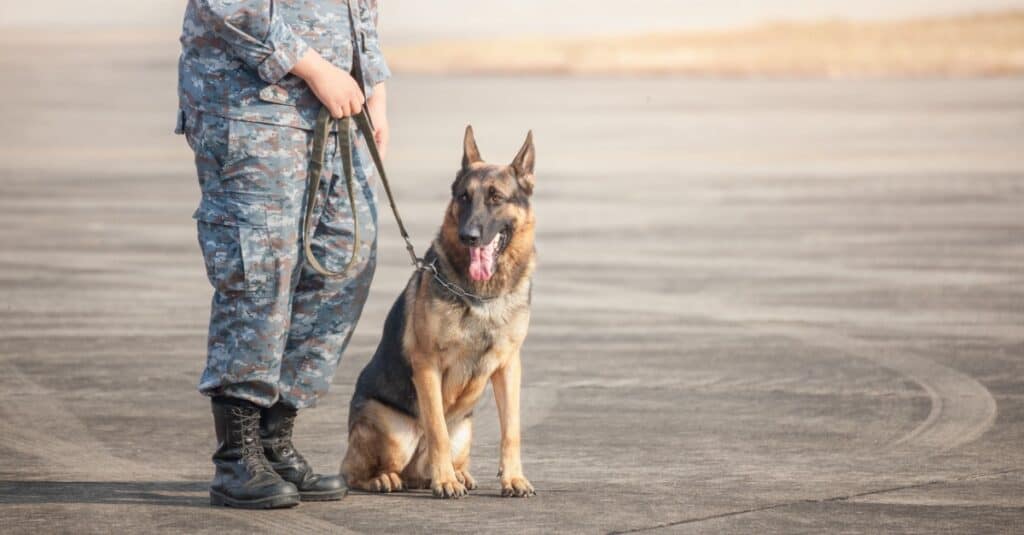
©iStock.com/Puttachat Kumkrong
The history of animals being used on the battlefield is a long and often inhumane one, but today’s military working dogs are largely treated with the respect and care that human soldiers are. Military working dogs performed critical roles in World War I delivering supplies, messages, and aid to wounded soldiers. The United States military would instate its first K-9 corps during World War II, and they’ve since expanded into every branch of the military. Today, they fulfill such a wide range of roles within military branches that it’s hard to distinguish one perfect breed of military dog. Their typical duties could involve sniffing for explosives, patrolling base camps, and performing search and rescue operations.
Regardless of the role a military dog performs, each one needs to go through basic training. The training process for an average working military dog can run anywhere from $20,000 to $40,000. Training military dogs in more specialized tasks can cost significantly more, and the cost of training a dog in bomb detection can cost as much as $150,000. German shepherds were bred to be the ultimate working dog, but they’ve also been the most common military dog breed for generations. Their combination of great all-around intelligence, temperament and physical acumen provide them with a well-rounded basis for more specialized training. But recent years have seen the rise of smaller but similar breeds like the Belgian Malinois and the Dutch shepherd.
2. Therapy Dogs
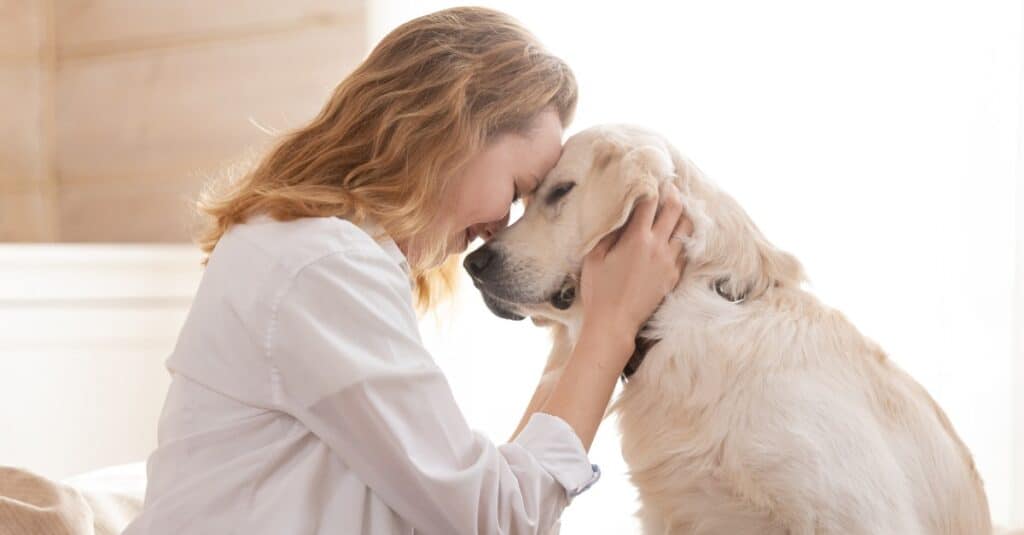
©iStock.com/Monoliza21
Seeing-eye guide dogs are the most well-recognized type of service dog, but canines can be trained to assist humans with any number of different mental or physical disabilities. Guide dogs for the deaf also exist, as do dogs trained for more comprehensive mobility assistance. Dogs with particularly strong senses of smell can even be trained to detect the onset of a diabetic episode or allergic attack. The breadth of potential disabilities a dog can be trained for ensures that each needs specialized training catered to the specific needs of their guardian.
There’s no breed that’s been cultivated since the beginning for a role as a service dog, but some breeds remain popular than others thanks to their energetic but mellow personalities and a strong sense of intelligence combined with a gentle willingness to please. The big and gentle Labrador retriever is the poster child for service dogs of any type — but Golden Retrievers follow close behind. It makes sense considering that these bird dogs have been bred to sit quietly for hours at a time, commit the locations of multiple carcass locations to memory, and then retrieve the bodies in their soft and gentle mouths without damaging them.
As a hybrid of the two most popular retrievers, the Goldador is close to the perfect all-around service dog.
3. Search and Rescue Dogs
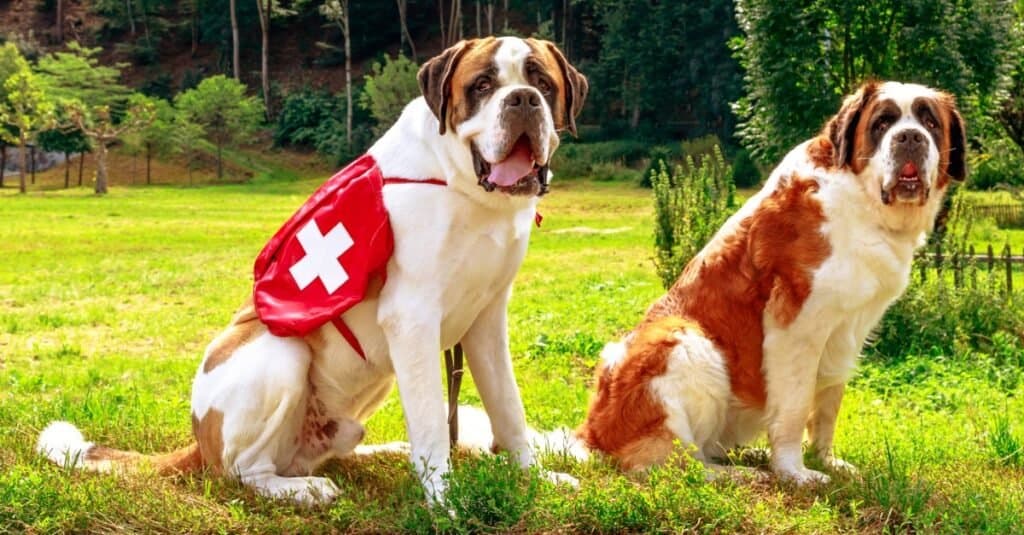
©iStock.com/bennymarty
The history of search and rescue dogs dates back at least all the way back to the late 19th century when Saint Bernard dogs were deployed throughout the Alps to assist in mountain rescues. Dogs of this breed no longer perform search and rescue work in the region, but the sophistication and diversity of these unique dog jobs have expanded significantly. A great sense of smell is obviously a priority for search and rescue dogs of any stripe. Bloodhounds, Basset Hounds, and Beagles are all popular choices. But there are also different types of working dogs in this classification, and that secondary factor can affect the value of particular breeds.
There are many unique dog jobs that fall under the broad umbrella of search and rescue work. A prodigious sense of smell is obviously a high priority for wilderness trackers that are bred to comb huge stretches of territory in search of remains. Exceptional communication skills and intelligence are necessary for the high-stakes precision required of dogs trained for urban disaster zones, and diligence and an extended sense of focus are critical for dogs trained to track potential victims in high-risk abduction situations. Regardless of specialization, any search and rescue dog is likely to spend at least 600 hours in training.
4. Herding Dogs
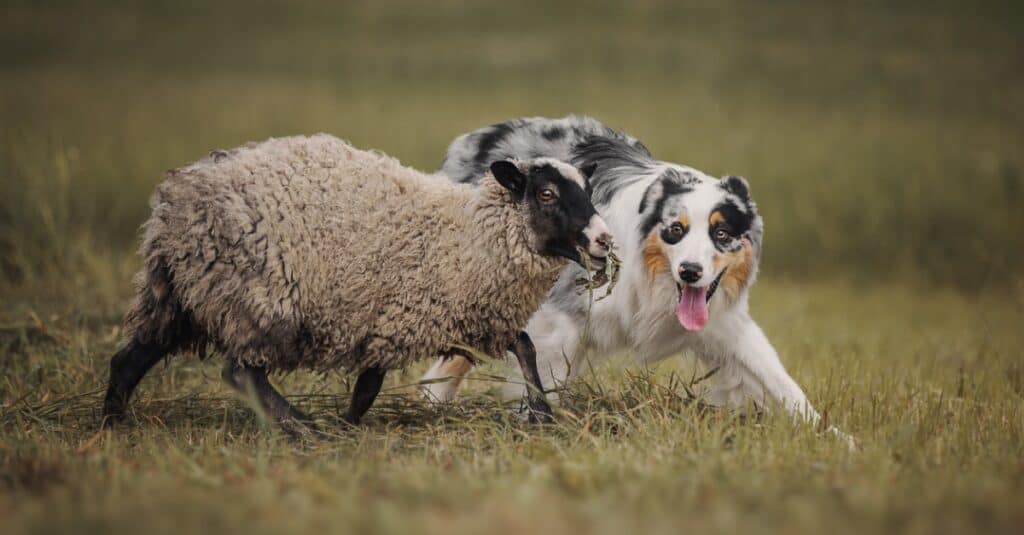
©iStock.com/Julia_Siomuha
Anthropology largely credits herding and farming practices as the birth of civilization — and if that’s the case, dogs have been invested in this experiment since the start. Evidence of herding dogs can be found as far back as 10,000 years ago, and they’ve grown into a diverse group of animals ever since. Both small breeds like the Welsh corgi and larger working dog breeds like the durable Berger Picard. Out of the different types of working dogs, herding breeds are some of the most varied. No matter what size they are, herding dogs will typically possess a coat that’s tailor-made for their environment. Double coats designed to resist rain are common among these working dog breeds.
Herding breeds can have a broad variety of personality traits, but some behavior is persistent across most breeds. These dogs need to have stamina and energy to deal with the conditions of herding animals that are often much larger than the dog herding them and quick enough on their feet to avoid danger. In addition to being smart and dependable enough to manage large herds on their own, they need to possess a sharp attention span and the ability to respond to both verbal and physical cues with precision and speed. Understandably, many of these breeds are also a great choice for agility training.
The Australian shepherd is one of the world’s most popular herding dogs in the world.
5. Drafting Dogs
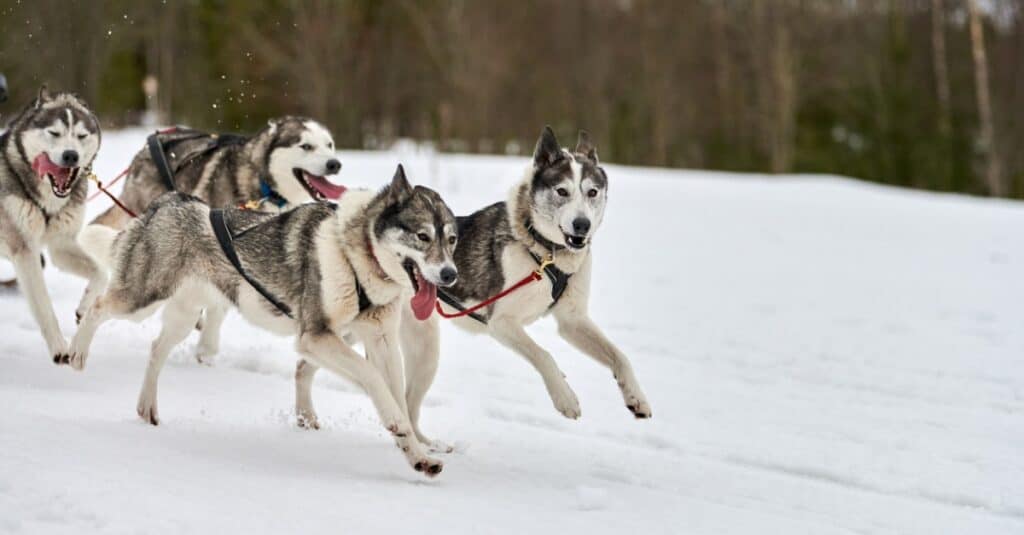
©iStock.com/TRAVELARIUM
Different types of working dogs face their own challenges, but few are asked to perform more physically demanding work than drafting dogs. Like oxen or horses, these dogs are assigned the task of pulling carts or sleds. Understandably, canines bred for these unique dog jobs are usually built to be thick and strong. Rottweilers, Bernese mountain dogs, and Newfoundlands are all species that were once bred specifically for this task — and many serve an obvious double purpose as a guard dog. In the 18th century, these dogs would be used to carry goods long distances, but most cart-pulling dogs today do so as part of training and competition.
More common today is the use of sled dogs. Breeds like the Siberian husky and Alaskan Malamute share the size and sturdy build of cart-pulling dogs, but they also have thick coats that can help them survive even in the most frigid of conditions. Sled dogs were used by explorers first venturing into the Arctic and helped deliver medicine and other essential supplies through the most rugged frontier of North America. Most sled dogs of today engage in the practice as recreation, engaging in events like Yukon Quest and the Iditarod Trail. But some remote communities throughout Alaska and Russia still use sled dogs to guide them through the wilderness.
Collies are equipped for multiple unique dog jobs, including cart-pulling and herding.
6. Guard Dogs
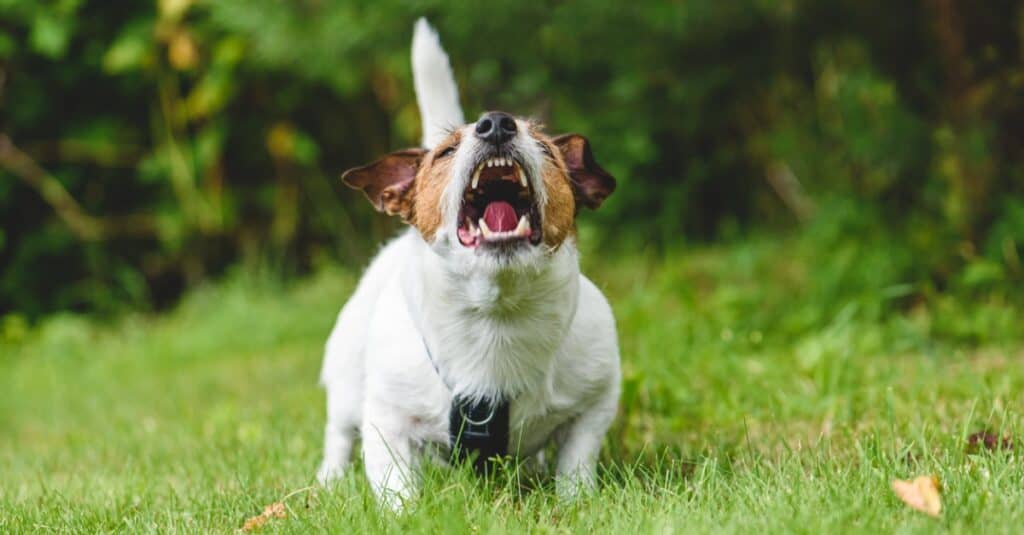
©iStock.com/alexei_tm
Some people assume that a good guard dog simply needs size and aggression to do its job, but these working dog breeds possess more delicacy than you might initially imagine. A good guard dog is one that can properly read threats and exercise caution but react swiftly when necessary. The ancestors of many guard dogs were designed to protect livestock from threats as serious as bears and wolves. Descendants like the Rottweiler and Mastiff could still hold their own in a fight ― though they hopefully won’t find themselves needing to. Most bully breeds were raised with the purpose of working as guard dogs, although the gentle loyalty they share for their owners makes them popular choices as family pets as well.
But size isn’t everything, and many small breeds serve important roles as guard dogs too. Chihuahuas and Jack Russell terriers are two small breeds that serve as exceptional guards. Their curious personality and alert behavior ensure that nothing gets by them and that you hear about it first. Dogs of any size require a decent amount of training to act appropriately in the right situations. An aggressive and constantly alert dog can be more risk than protection without tempered behavior.
The Doberman Pinscher has remained a popular choice of guard dog for decades.
Next Up: Types of Guard Dogs Breeds
The photo featured at the top of this post is © iStock.com/Vladimir1965
Ready to discover the top 10 cutest dog breeds in the entire world?
How about the fastest dogs, the largest dogs and those that are -- quite frankly -- just the kindest dogs on the planet? Each day, AZ Animals sends out lists just like this to our thousands of email subscribers. And the best part? It's FREE. Join today by entering your email below.
Thank you for reading! Have some feedback for us? Contact the AZ Animals editorial team.






